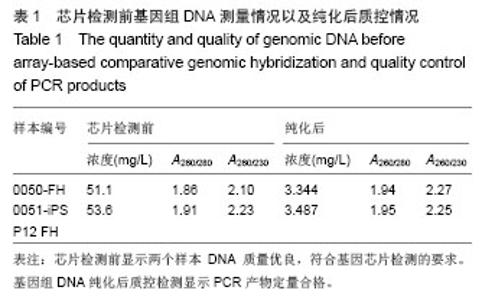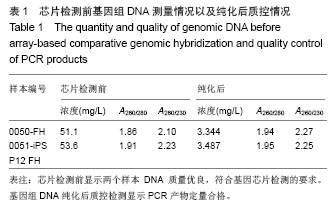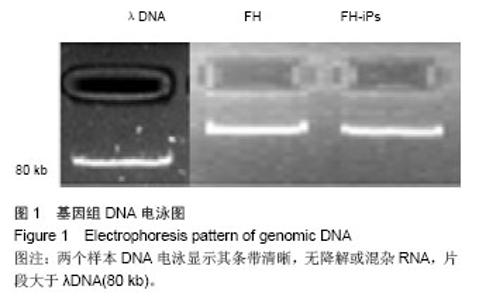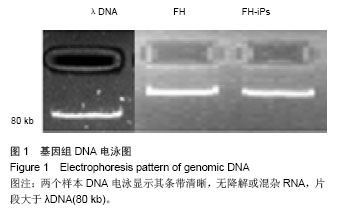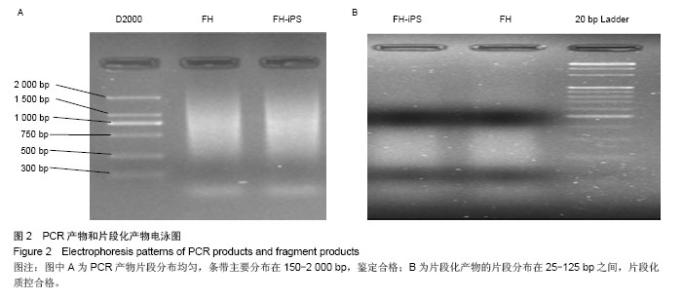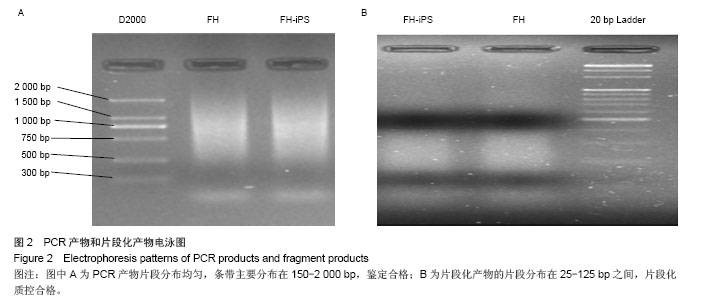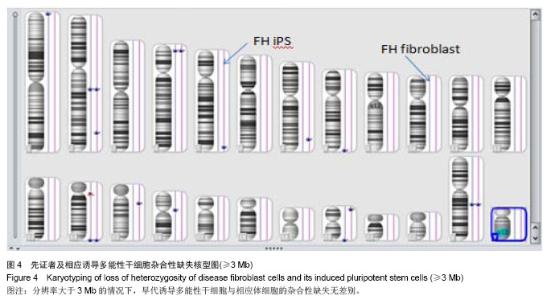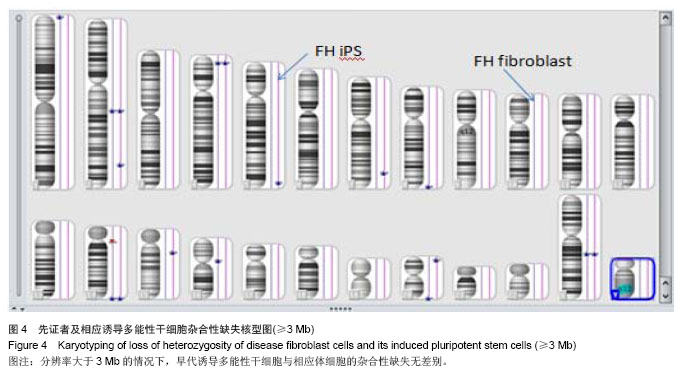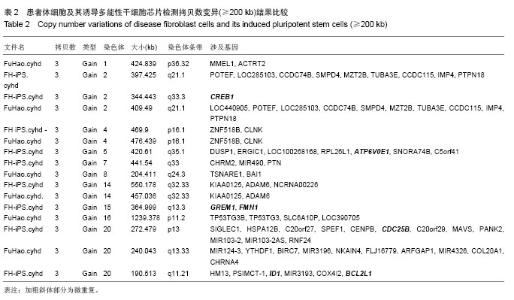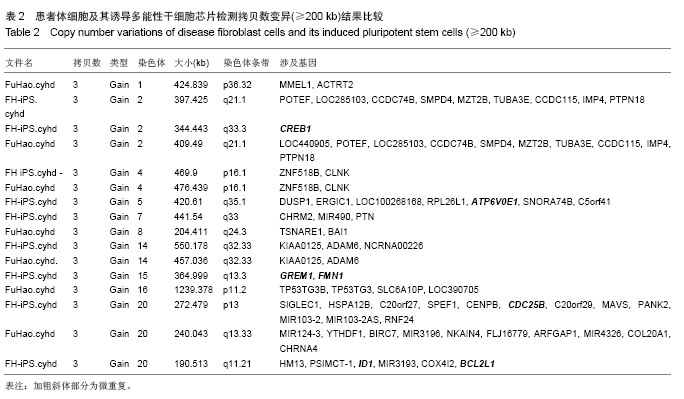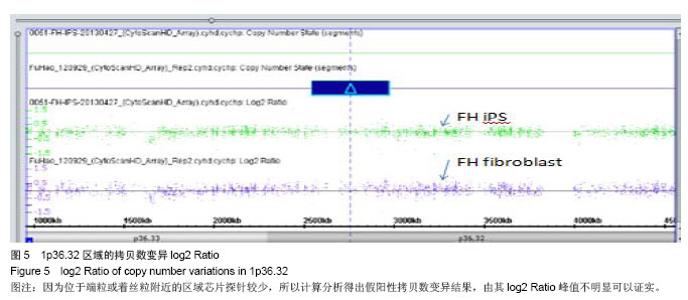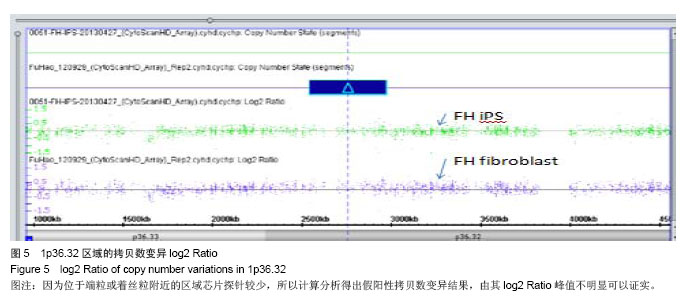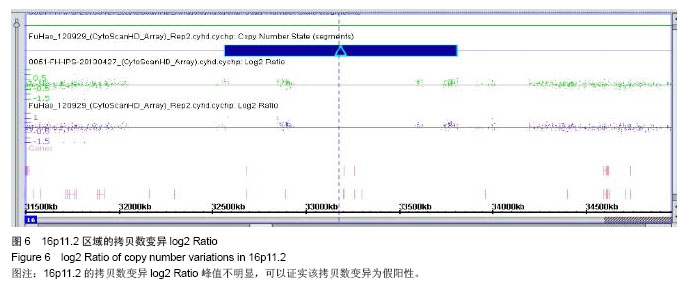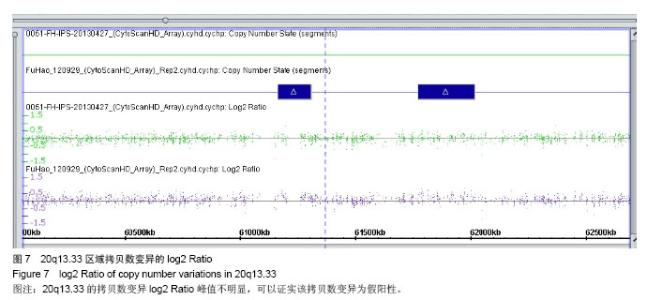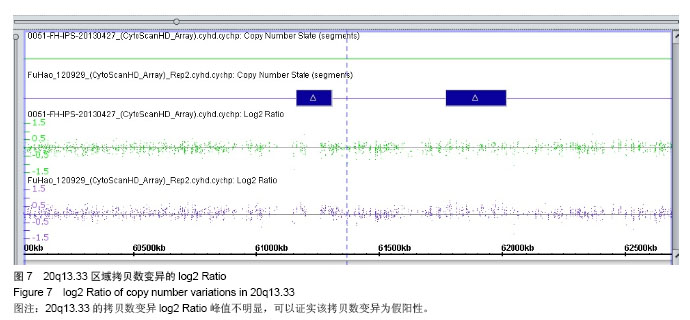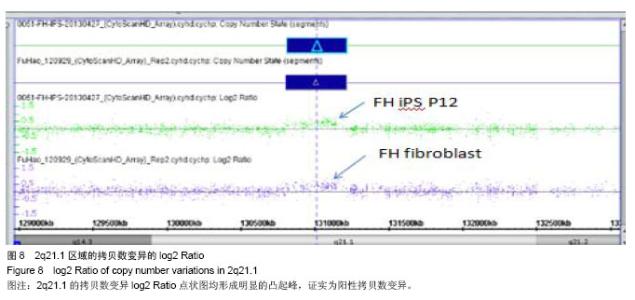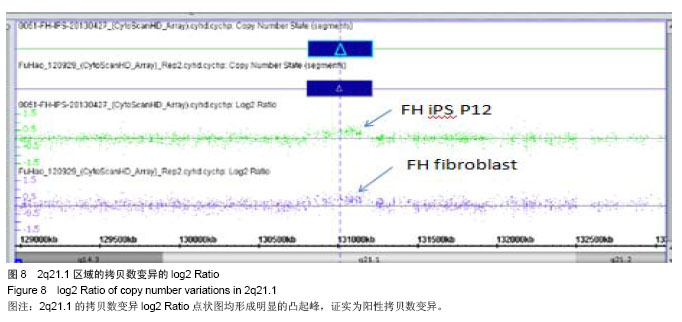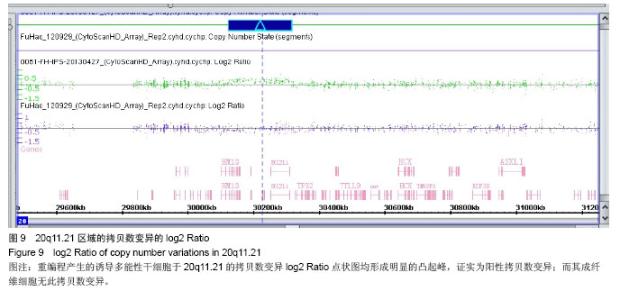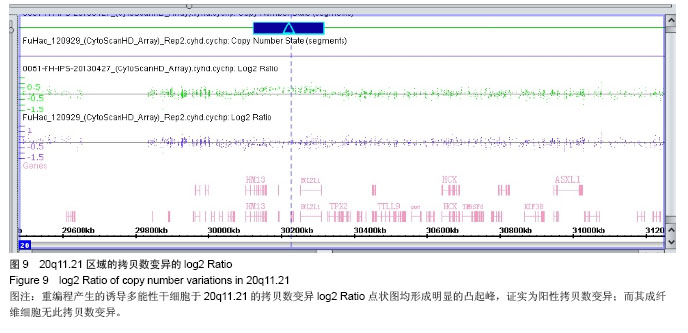Chinese Journal of Tissue Engineering Research ›› 2014, Vol. 18 ›› Issue (10): 1621-1628.doi: 10.3969/j.issn.2095-4344.2014.10.023
Previous Articles Next Articles
Reprogramme-induced genomic stability
Cao Ding-ya, Li Jie-liang, Liu Wei-qiang, He Wen-yin, He Wen-zhi, Luo Yu-mei, Fan Yong, Sun Xiao-fang
- Department of Gynecology and Obstetrics, Third Affiliated Hospital of Guangzhou Medical University, Key Laboratory for Major Obstetric Diseases of Guangdong Province, Guangzhou 510150, Guangdong Province, China
-
Online:2014-03-05Published:2014-03-05 -
Contact:Sun Xiao-fang, Professor, Doctoral supervisor, Department of Gynecology and Obstetrics, Third Affiliated Hospital of Guangzhou Medical University, Key Laboratory for Major Obstetric Diseases of Guangdong Province, Guangzhou 510150, Guangdong Province, China -
About author:Cao Ding-ya, Master, Physician, Department of Gynecology and Obstetrics, Third Affiliated Hospital of Guangzhou Medical University, Key Laboratory for Major Obstetric Diseases of Guangdong Province, Guangzhou 510150, Guangdong Province, China -
Supported by:the National Natural Science Foundation of China, No. 31171229; the Collaborative Fund of the National Natural Science Foundation of China & the Natural Science Foundation of Guangdong Province, No. U1132005
CLC Number:
Cite this article
Cao Ding-ya, Li Jie-liang, Liu Wei-qiang, He Wen-yin, He Wen-zhi, Luo Yu-mei, Fan Yong, Sun Xiao-fang. Reprogramme-induced genomic stability[J]. Chinese Journal of Tissue Engineering Research, 2014, 18(10): 1621-1628.
share this article
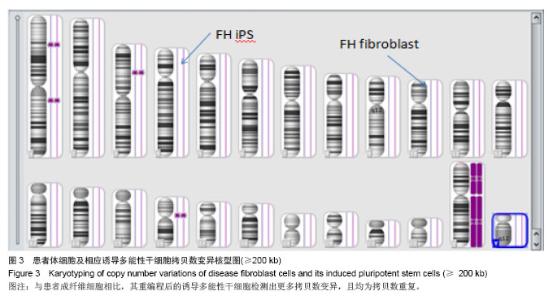
2.5 芯片扫描结果分析 重编程前后,先证者的体细胞与相应早代诱导多能性干细胞的拷贝数变异及杂合性缺失比较(图3,4)。 进一步观察体细胞及诱导多能性干细胞存在的拷贝数变异,两者既有联系也有区别,见表2。诱导多能性干细胞早代存在的拷贝数变异明显多于成纤维细胞,且均为微重复(加粗、斜体);再次分析各拷贝数变异的log2 Ratio发现,成纤维细胞于1p36.32、16p11.2及20q13.33区域拷贝数变异的log2 Ratio点状图未形成明显突起(图5-7),这些拷贝数变异为假阳性。 而诱导多能性干细胞早代存在的拷贝数变异log2 Ratio点状图均形成明显的凸起峰,为阳性拷贝数变异(图8,9)。"
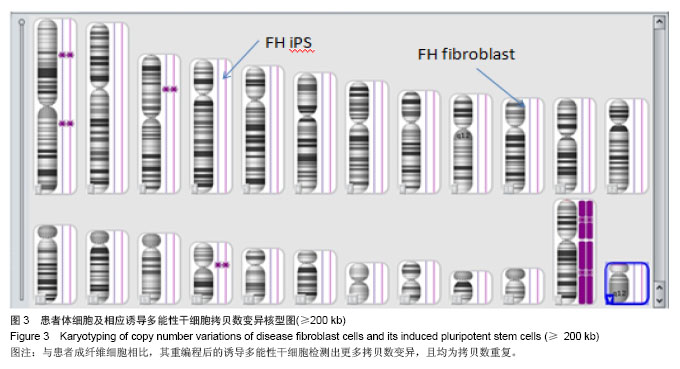
| [1]Rieske P, Krynska B, Azizi SA. Human fibroblast-derived cell lines have characteristics of embryonic stem cells and cells of neuro-ectodermal origin.Differentiation. 2005;73(9-10): 474-483. [2]Takahashi K, Yamanaka S.Induction of pluripotent stem cells from mouse embryonic and adult fibroblast cultures by defined factors.Cell. 2006;126(4):663-676. [3]Fox JL.FDA scrutinizes human stem cell therapies.Nat Biotechnol. 2008;26(6):598-599. [4]Thomson JA, Marshall VS. Primate embryonic stem cells. Curr Top Dev Biol. 1998;38:133-165. [5]Thomson JA, Itskovitz-Eldor J, Shapiro SS,et al.Embryonic stem cell lines derived from human blastocysts.Science. 1998;282(5391):1145-1147. [6]Catalina P, Montes R, Ligero G,et al.Human ESCs predisposition to karyotypic instability: Is a matter of culture adaptation or differential vulnerability among hESC lines due to inherent properties. Mol Cancer. 2008;7:76. [7]Dahl JA, Duggal S, Coulston N,et al.Genetic and epigenetic instability of human bone marrow mesenchymal stem cells expanded in autologous serum or fetal bovine serum.Int J Dev Biol. 2008;52(8):1033-1042. [8]De Temmerman N, Seneca S, Van Steirteghem A,et al.CTG repeat instability in a human embryonic stem cell line carrying the myotonic dystrophy type 1 mutation.Mol Hum Reprod. 2008;14(7):405-412. [9]Gore A, Li Z, Fung HL,et al.Somatic coding mutations in human induced pluripotent stem cells.Nature. 2011;471 (7336): 63-67. [10]Imreh MP, Gertow K, Cedervall J,et al. In vitro culture conditions favoring selection of chromosomal abnormalities in human ES cells.J Cell Biochem. 2006;99(2):508-516. [11]Inzunza J, Sahlén S, Holmberg K,et al.Comparative genomic hybridization and karyotyping of human embryonic stem cells reveals the occurrence of an isodicentric X chromosome after long-term cultivation.Mol Hum Reprod. 2004;10(6):461-466. [12]Liang Q, Conte N, Skarnes WC,et al.Extensive genomic copy number variation in embryonic stem cells.Proc Natl Acad Sci U S A. 2008;105(45):17453-17456. [13]Närvä E, Autio R, Rahkonen N,et al.High-resolution DNA analysis of human embryonic stem cell lines reveals culture-induced copy number changes and loss of heterozygosity.Nat Biotechnol. 2010;28(4):371-377. [14]Taapken SM, Nisler BS, Newton MA,et al. Karotypic abnormalities in human induced pluripotent stem cells and embryonic stem cells.Nat Biotechnol. 2011;29(4):313-314. [15]Martins-Taylor K, Nisler BS, Taapken SM,et al.Recurrent copy number variations in human induced pluripotent stem cells. Nat Biotechnol. 2011;29(6):488-491. [16]Martins-Taylor K, Xu RH.Concise review: Genomic stability of human induced pluripotent stem cells.Stem Cells. 2012;30(1): 22-27. [17]Laurent LC, Ulitsky I, Slavin I,et al. Dynamic changes in the copy number of pluripotency and cell proliferation genes in human ESCs and iPSCs during reprogramming and time in culture.Cell Stem Cell. 2011;8(1):106-118. [18]Hussein SM, Batada NN, Vuoristo S,et al.Copy number variation and selection during reprogramming to pluripotency. Nature. 2011;471(7336):58-62. [19]Mayshar Y, Ben-David U, Lavon N,et al. Identification and classification of chromosomal aberrations in human induced pluripotent stem cells.Cell Stem Cell. 2010;7(4):521-531. [20]Lefort N, Feyeux M, Bas C,et al.Human embryonic stem cells reveal recurrent genomic instability at 20q11.21.Nat Biotechnol. 2008;26(12):1364-1366. [21]Närvä E, Autio R, Rahkonen N,et al.High-resolution DNA analysis of human embryonic stem cell lines reveals culture-induced copy number changes and loss of heterozygosity.Nat Biotechnol. 2010;28(4):371-377. [22]Spits C, Mateizel I, Geens M,et al.Recurrent chromosomal abnormalities in human embryonic stem cells.Nat Biotechnol. 2008;26(12):1361-1363. [23]Kim D, Kim CH, Moon JI,et al.Generation of human induced pluripotent stem cells by direct delivery of reprogramming proteins.Cell Stem Cell. 2009;4(6):472-476. [24]Reuter VE.Origins and molecular biology of testicular germ cell tumors.Mod Pathol. 2005;18 Suppl 2:S51-60. [25]Hanna J, Saha K, Pando B,et al.Direct cell reprogramming is a stochastic process amenable to acceleration.Nature. 2009; 462(7273):595-601. [26]Laurent LC, Ulitsky I, Slavin I,et al. Dynamic changes in the copy number of pluripotency and cell proliferation genes in human ESCs and iPSCs during reprogramming and time in culture.Cell Stem Cell. 2011;8(1):106-118. [27]Vissers LE, Stankiewicz P. Microdeletion and microduplication syndromes.Methods Mol Biol. 2012;838:29-75. [28]Mefford HC, Yendle SC, Hsu C,et al.Rare copy number variants are an important cause of epileptic encephalopathies. Ann Neurol. 2011;70(6):974-985. [29]Abyzov A, Mariani J, Palejev D,et al.Somatic copy number mosaicism in human skin revealed by induced pluripotent stem cells.Nature. 2012;492(7429):438-442. [30]Liu W, Li M, Qu J,et al.Reevaluation of the safety of induced pluripotent stem cells: a call from somatic mosaicism.Protein Cell. 2013;4(2):83-85. [31]Dalgaard MD, Weinhold N, Edsgärd D,et al.A genome-wide association study of men with symptoms of testicular dysgenesis syndrome and its network biology interpretation.J Med Genet. 2012;49(1):58-65. [32]Nakayama M.Cell Therapy Using Induced Pluripotent Stem (iPS) Cells Meets Next-Next Generation DNA Sequencing Technology.Curr Genomics. 2009;10(5):303-305. |
| [1] | Xia Guoming, Xu Qiang, Liu Xuqiang, Yu Xiaolong, Dai Min. Application and effect of induced pluripotent stem cells in bone surgery tissue engineering [J]. Chinese Journal of Tissue Engineering Research, 2021, 25(19): 3077-3082. |
| [2] | Ni Jinghua, Luo Jia, Jiang Sen, Li Heng, Zhu Jianzhong. Application and prospect of induced pluripotent stem cells in tumor diseases [J]. Chinese Journal of Tissue Engineering Research, 2021, 25(13): 2127-2132. |
| [3] | Liu Yali, Wang Huan, Yan Qiong, Wang Gang, Hou Boru, Wang Dengfeng, Ma Bin, Ren Haijun. Therapeutic effect of stem cells in chronic temporal lobe epilepsy: a systematic review of animal studies [J]. Chinese Journal of Tissue Engineering Research, 2021, 25(1): 152-158. |
| [4] | Chen Peishan, Zhang Haiyan. Organs-on-a-chip and engineered human tissues in drug development [J]. Chinese Journal of Tissue Engineering Research, 2020, 24(29): 4717-4723. |
| [5] | Liu Zu, Han Shen, Li Yaxiong, Li Kunlin, Zhang Yayong, Jiang Lihong. Applications, roles and problems of exosomes derived from different stem cells in the treatment of cardiovascular diseases [J]. Chinese Journal of Tissue Engineering Research, 2020, 24(19): 3063-3070. |
| [6] | Gao Zhencheng, Liu Xin. The role and application of mesenchymal stem cells-derived exosomes in the treatment of nervous system diseases [J]. Chinese Journal of Tissue Engineering Research, 2020, 24(19): 3048-3054. |
| [7] | Cai Zhibin, Wang Ping. Hot issues of research on cells and biological scaffolds in cardiac tissue engineering [J]. Chinese Journal of Tissue Engineering Research, 2020, 24(16): 2599-2605. |
| [8] | Fan Wenjuan, Chen Xudong, Deng Jinbo. Cerebral organoids culture and application in central nervous system diseases [J]. Chinese Journal of Tissue Engineering Research, 2020, 24(11): 1756-1761. |
| [9] | Liu Tingting, Han Changxu, Wang Guoqiang. New insight into cell transplantation for repairing intervertebral discs [J]. Chinese Journal of Tissue Engineering Research, 2020, 24(1): 154-158. |
| [10] | Cheng Gang, Huang Denggao, Liang Ying. Hepatocyte-like cells derived from induced pluripotent stem cells inhibit liver fibrosis in rats [J]. Chinese Journal of Tissue Engineering Research, 2019, 23(9): 1384-1389. |
| [11] | Liu Shenggang, Yang Hongzhong, He Baimei. Autologous induced pluripotent stem cell transplantation for acute lung injury in rats [J]. Chinese Journal of Tissue Engineering Research, 2019, 23(9): 1403-1409. |
| [12] | Zeng Jianyin, Han Shen, Li Yaxiong, Liu Bin, Zhang Yayong, Jiang Lihong. Application of induced pluripotent stem cells in cardiovascular diseases: efficiency and safety [J]. Chinese Journal of Tissue Engineering Research, 2019, 23(9): 1448-1454. |
| [13] | Pan Lijuan, Wang Rongli. Therapeutic effect of autologous source induced pluripotent stem cell transplantation on chronic hepatitis B-induced liver injury mice [J]. Chinese Journal of Tissue Engineering Research, 2019, 23(5): 773-778. |
| [14] | Ma Linjie, Xue Wentao, Tan Jupeng. Induced pluripotent stem cell transplantation for systemic lupus erythematosus in a mouse model [J]. Chinese Journal of Tissue Engineering Research, 2019, 23(33): 5286-5292. |
| [15] | Gong Jiao, Liu Ming. Human induced pluripotent stem cell transplantation for hypoxic-ischemic encephalopathy in neonatal mice [J]. Chinese Journal of Tissue Engineering Research, 2019, 23(33): 5322-5327. |
| Viewed | ||||||
|
Full text |
|
|||||
|
Abstract |
|
|||||
